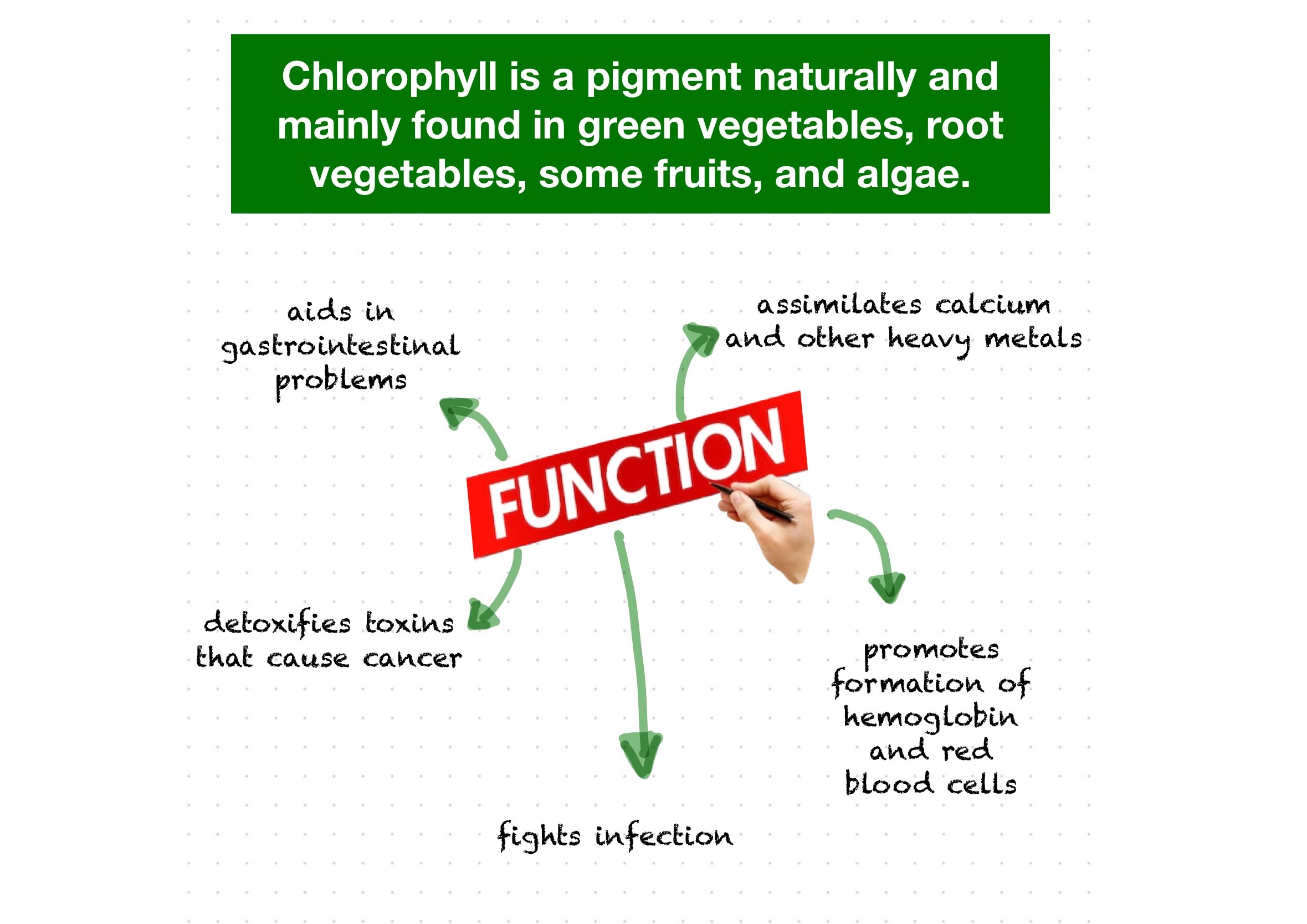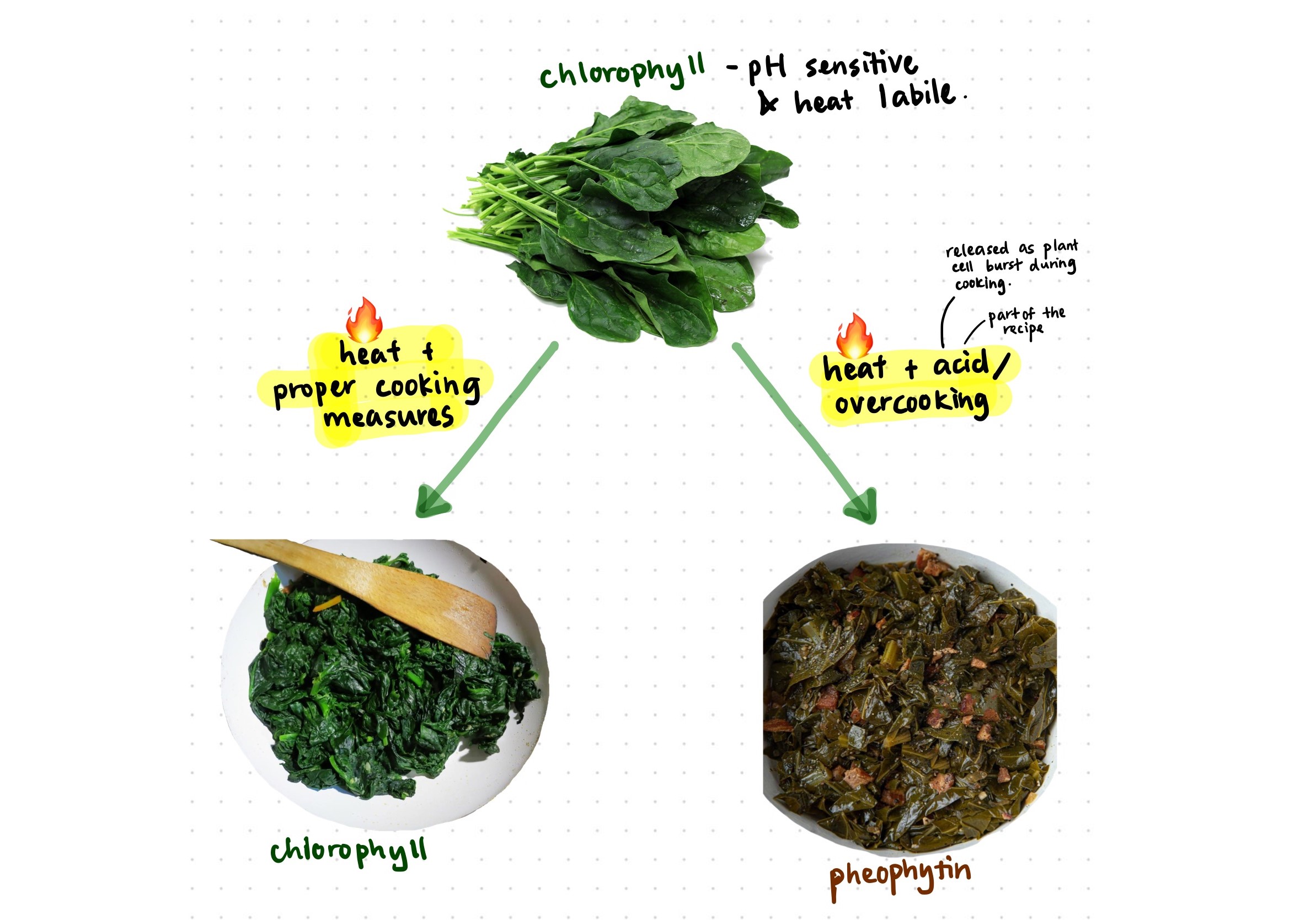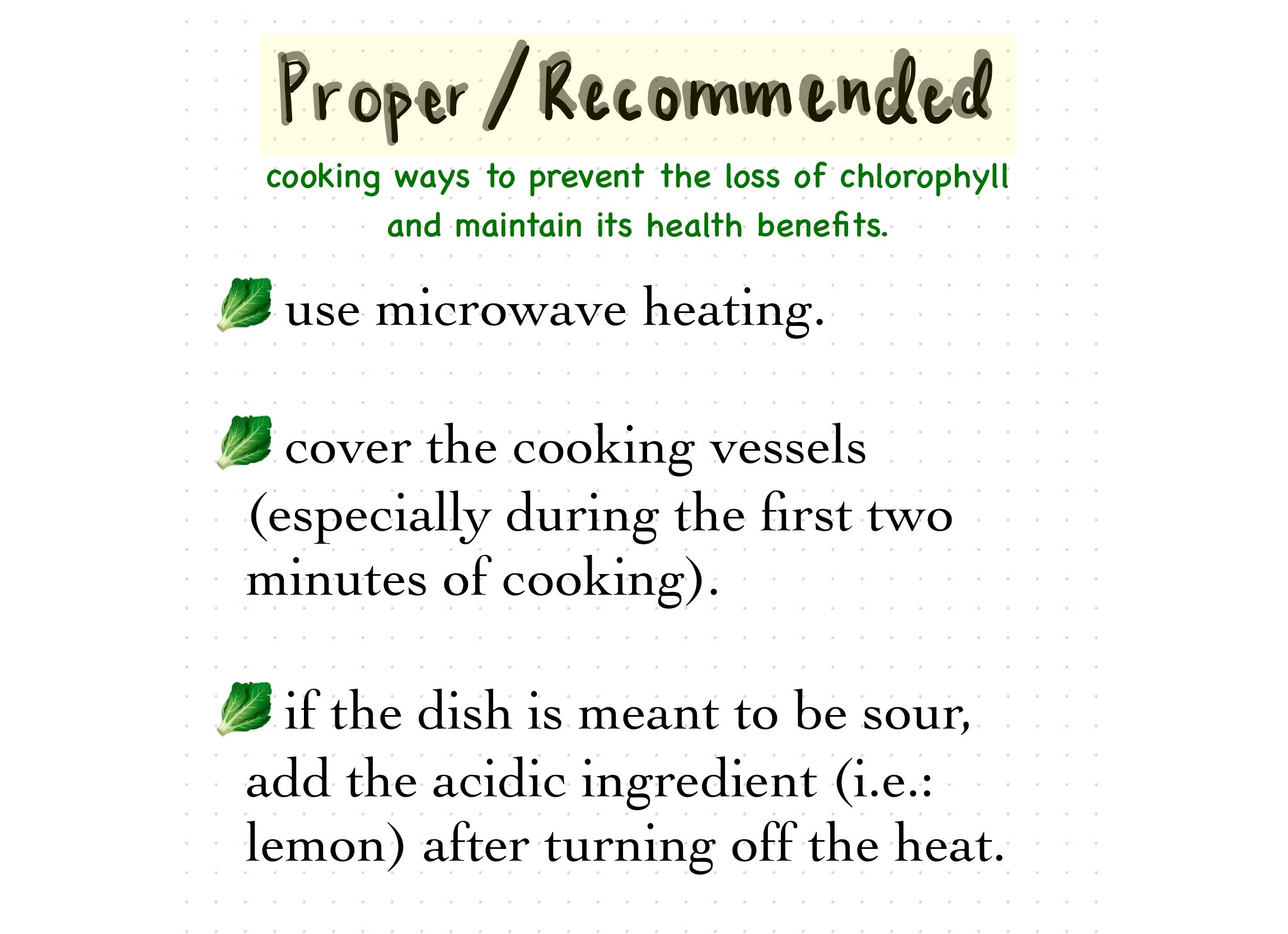Chlorophyll
Chlorophyll is a green pigment that occur in the plastids of most plants, algae, and certain bacteria. In these organisms. Chlorophyll pigments are strong natural antioxidants acting as free radical scavengers (Lanfer-Marquez,
Barros, & Sinnecker, 2005).
Specifically, it has been estimated that a common diet includes the ingestion of 26–86 mg of chlorophyll pigments everyday based on a nine-year follow-up epidermal study. Humans ingest
chlorophyll from fruits and vegetables (especially green leafy vegetables) or through chlorophyll supplements due to its possible health benefits.
However, it is important for us to know that ‘green’ vegetables (taking spinach
as an example in this post) would have a dirty brown color when overcooked. Despite not adding an acidic ingredient, the acidity of the contents as plant cells burst makes it difficult to prevent chlorophyll to be degraded
into pheophytins.
An approach the food industry used is by adding a small amount of sodium bicarbonate/ baking soda but this approach affected the texture and flavor and increased the loss of vitamin C (Coultate, 2002).


